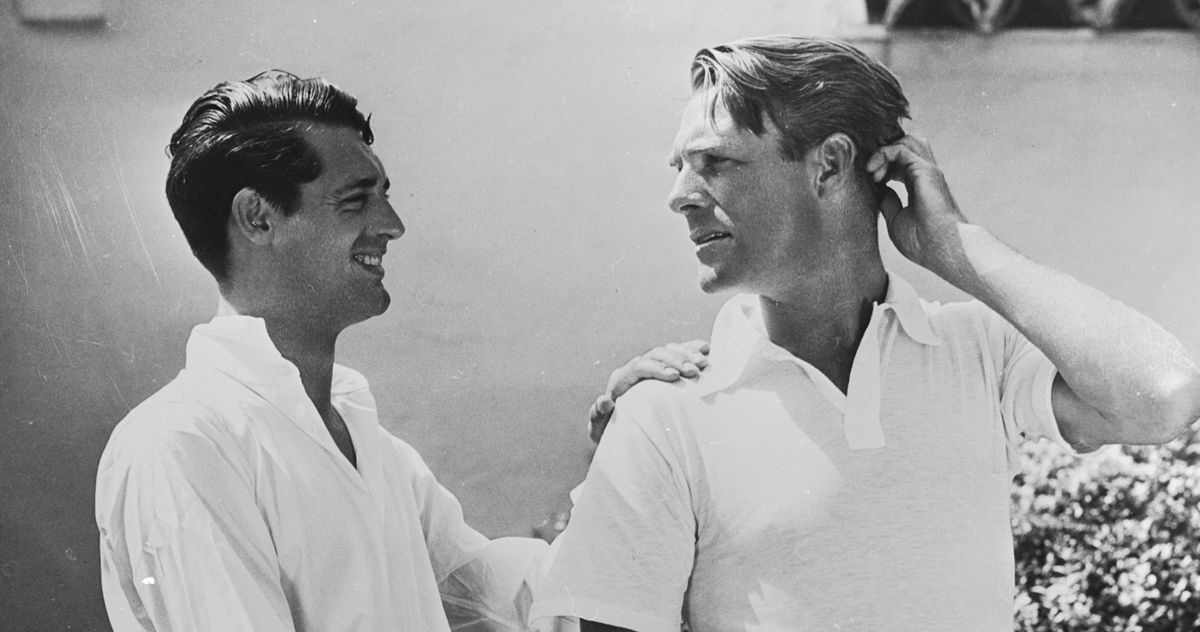In an old Hollywood tale, Cary Grant and Randolph Scott were featured in a headline back in the 1933 issue of Hollywood magazine with a striking statement: “We Can't Afford a Hollywood Marriage!” The two stars were portrayed in a domestic setting, whistling as they did the dishes and singing joyfully at the piano.
They discussed the challenges of stardom, highlighting the extravagant lifestyle demanded by Hollywood that made marriage seem unattainable for them.
Cary Grant expressed that if they were in different professions, affording marriage would be much easier without the pressure of upholding a lavish image.
Their living arrangement started in 1932 when both actors were rising stars at Paramount Studios.
This unconventional setup continued until 1940 when they were already well-established in their careers, sharing a spacious beach house in Santa Monica.
Unlike other actor pairings of the era, such as James Stewart and Henry Fonda, the relationship between Grant and Scott was not just a simple roommate situation.
Their close companionship led to speculations about a romantic involvement rather than just a platonic friendship, fueled by the numerous images depicting them happily together.
The narrative surrounding Hollywood stars in the 1930s was often more about creating an aura of glamour and escapism rather than portraying reality.
Fan magazines, which were widely read at the time mainly by women seeking a dose of fantasy, depicted the lives of celebrities as carefree and luxurious, free from the mundane responsibilities of ordinary life.
Grant and Scott were marketed as eligible bachelors living in a place dubbed “Bachelor Hall,” where they were shielded from the pressures of adult life, embodying eternal youth and innocence.
The publicity stunts orchestrated by Paramount aimed to boost the popularity of the two actors who were struggling to make a mark in the industry.
As Grant and Scott were positioned as bachelors in need of feminine influence, articles in magazines like Modern Screen even featured their favorite recipes, appealing to readers to cater to their domestic needs.
The duo was portrayed as needing assistance in everyday tasks, reinforcing the image of them as charming yet helpless without female guidance.
Despite Grant's subsequent marriage to Virginia Cherrill in 1934 and his divorce a year later, he and Scott remained inseparable, moving into the Santa Monica beach house together.
Throughout this period, Grant had relationships with various actresses while Scott tied the knot with Marion duPont, indicating their heterosexual orientation according to contemporaries.
The dynamic at the beach house, as depicted in fan magazines, showcased a seemingly idyllic existence of shared activities and intimate moments, sparking modern interpretations of a hidden gay relationship.
While present-day assessments tend to interpret the images of Grant and Scott as evidence of a concealed romantic affair, historical records suggest otherwise.
Cary Grant's extensive archives reveal that the photographs capturing their domestic life were part of a deliberate promotional strategy crafted by Paramount.
The photographer responsible for the intimate shots, Jerome Zerbe, brought a fresh approach to celebrity photography, aiming for candid and revealing snapshots that conveyed a sense of intimacy, albeit tinged with subtle sensuality.
The staged nature of these images became apparent through the studio's cautious selection of photographs, opting to withhold certain shots deemed too suggestive for publication.
Grant and Scott, referred to as “the boys” or “best friends” in the articles, were presented as eligible bachelors rather than overtly sexualized figures, aligning with the magazines' sophisticated and tasteful portrayal of their relationship.
The public reception of these images in the 1930s differed from modern interpretations, emphasizing admiration over salacious intent.
In retrospect, Grant and Scott's collaboration in the film “My Favorite Wife” in 1940 hinted at a playful acknowledgment of their past publicity antics.
The movie playfully referenced their earlier portrayals as close companions, suggesting that the actors were self-aware of the exaggerated narratives constructed around their personal lives.
While the public perception of Grant and Scott's relationship may have evolved over time, their on-screen chemistry and enduring friendship endure as a testament to their complex bond beyond the lens of sensationalized media coverage.
Related Posts
- Why Cary Grant Embraced Being Labeled Gay
- Cary Grant’s Visits to Grace Kelly in Monaco: A Heartwarming Tale of Old Hollywood
- Cary Grant’s Hidden Love: Unveiling the Secrets of Hollywood’s Golden Age
- Cary Grant’s Alleged Secret Romance with Male Costume Designer Revealed in New Documentary
- Cary Grant Ties the Knot with Randolph Scott!































